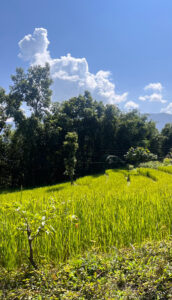From Our Kitchens to Our Skin: The Timeless Magic of Rice
In every Asian home, rice isn’t just food it’s a feeling. A symbol of abundance, nourishment, and comfort. From morning meals to festive feasts, rice finds its way into our plates, hearts, and even our beauty rituals.Across Asia, rice has always been more than a staple , t’s a way of life. We eat it, celebrate with it, and even heal with it. It’s estimated that more than half the world’s population depends on rice as a primary source of food. In India, West Bengal often called the Rice Bowl of India produces some of the finest varieties, from fragrant Gobindobhog to the beloved parboiled rice that defines so many Bengali meals. And then there’s Selroti, that golden, ring-shaped bread made from rice flour a taste of home for every Nepali. Each time Selroti was made at home, I remember keeping a small portion of the batter aside… not to eat, but to use as a gentle face scrub. As a teenager, it was my secret beauty ritual — simple, natural, and surprisingly effective.We’ve always known the power of rice the way the starch from busui ko bhaat (overcooked rice) would be poured into saab ko jhol, adding depth, texture, and a touch of comfort to the simplest of homecooked meals. What we didn’t know then was that these everyday practices carried ancient wisdom the same wisdom now being repackaged and praised by the beauty world as the secret behind “Korean glass skin.”Today, the world is waking up to what our grandmothers always knew ,that simple, natural ingredients can transform wellness. Rice water, once a humble kitchen leftover, is now a luxury skincare ingredient known for its brightening and soothing properties. For me, creating soaps from rice is a way of returning to those roots a small homage to the purity and simplicity of our traditions. Because whether it’s in our kitchens or on our skin, rice reminds us that beauty and nourishment often come from the same source ‘Home’.

